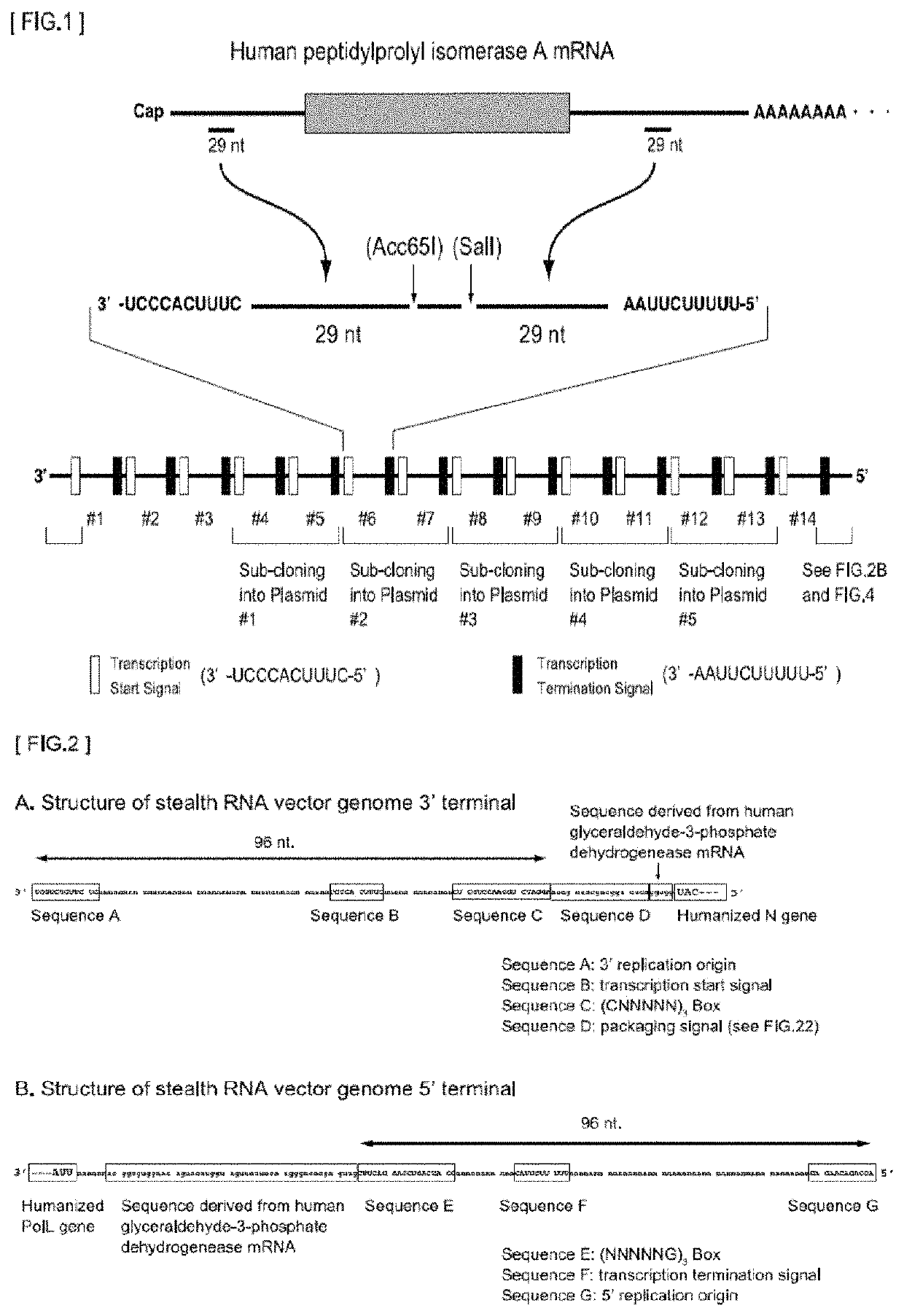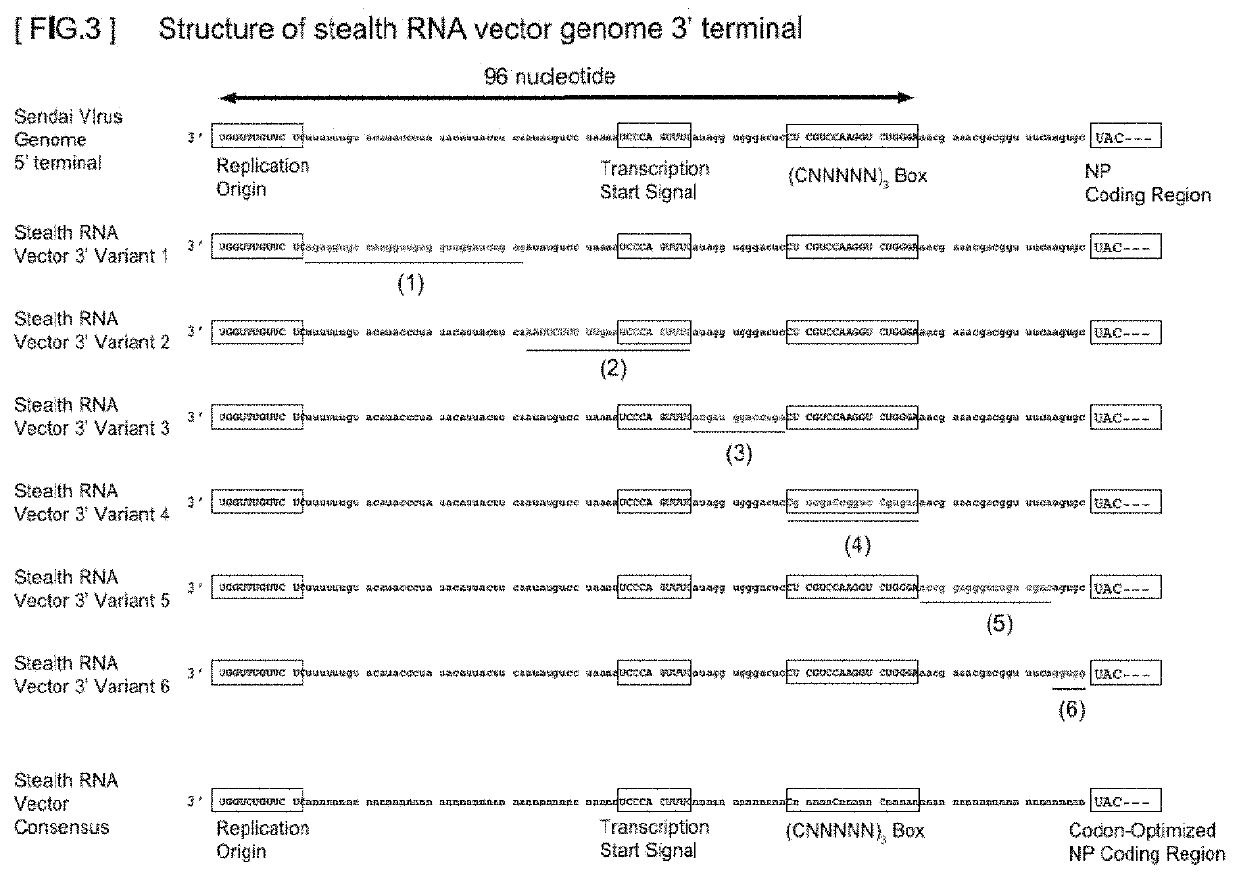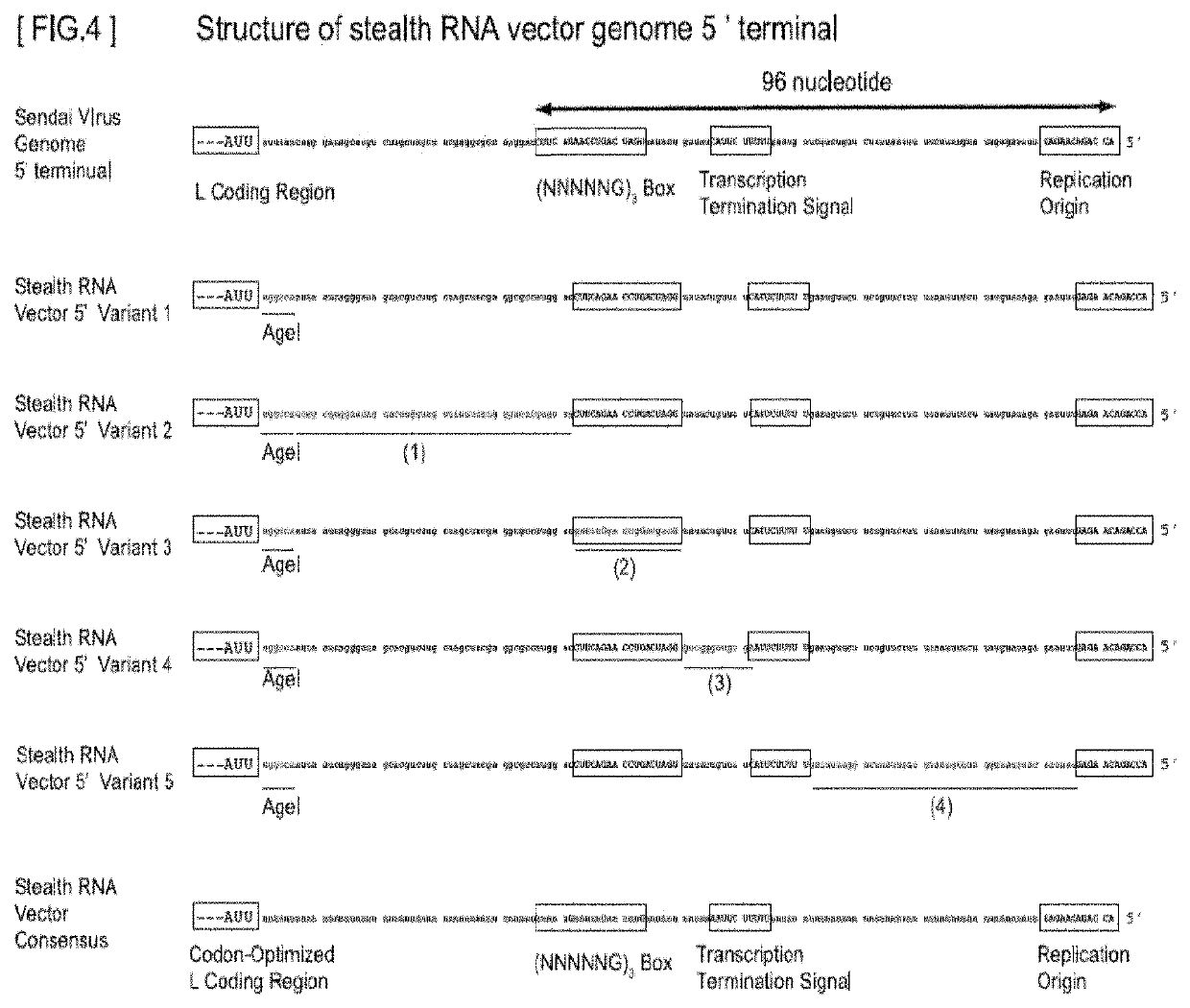Gene expression system using stealthy RNA, and gene introduction/expression vector including said RNA
a gene and gene technology, applied in the direction of transferases, genetically modified cells, fused cells, etc., can solve the problems of gene expression levels seriously affecting the characteristics of reprogrammed cells, unable to remove gene securely from every cell, and unable to achieve the effect of suppressing the activity of rna-dependent genes, low cytotoxicity, and easy removal
- Summary
- Abstract
- Description
- Claims
- Application Information
AI Technical Summary
Benefits of technology
Problems solved by technology
Method used
Image
Examples
example 16
(Example 16) Analysis of Influence of Variation in Expression Efficiency of N Protein and C Protein on Expression of Exogenous Genes Installed on Stealth RNA Gene Expression System (see FIG. 20)
[0471]In front of the translation initiation codon (AUG) of firefly luciferase cDNA encoded by pGL4.12 (Promega Corporation) (GenBank Accession Number AY738224), an RNA sequence corresponding to SEQ ID NO: 55, SEQ ID NO: 57 or SEQ ID NO: 58 was inserted, and firefly luciferase was expressed in HeLa cells by using a CMV promoter, and activity of luciferase was examined by using Dual-Luciferase Reporter Assay System (FIG. 20). It was demonstrated that when an another initiation codon is placed at out-frame position and upstream to the authentic translation initiation codon, the translating frame is shifted from the original translating frame of the protein, and the translation efficiency is deteriorated.
[0472]Next, stealth RNA gene expression systems #6, #7 and #8 in which a base sequence on 5′...
example 18
(Example 18) Analysis of Influence of Packaging Signal on Genome 3′ Side of Stealth RNA Gene Expression System on Production of Vector Particle (see FIG. 22)
[0475]Stealth RNA gene expression system #9 is a system in which sequence D on 3′ side of genome RNA (SEQ ID NO: 17) is deleted from stealth RNA gene expression system #6 (FIG. 20). Stealth RNA gene expression system #10 is a system in which sequence D on 3′ side of genome RNA (SEQ ID NO: 17) is deleted from stealth RNA gene expression system #7 (FIG. 20). In BHK / T7 / 151M (SE) cells stably retaining these stealth RNA gene expression systems, proteins M, F, and HN were expressed in the manner as described in (Example 5), and the gene introduction ability of the stealth RNA vector collected in the supernatant was assayed by an indirect fluorescent antibody method using an anti-NP protein antibody and LLCMK2 cells (Non-Patent Document 7).
[0476]Further, this sequence of 18 nucleotides was replaced by an arbitrarily selected partial s...
example 21
(Example 21) Induction of Induced Pluripotent Stem Cells (iPS Cells) by Stealth RNA Vector Carrying Six Reprogramming Genes (FIG. 25)
[0481]The capability of carrying six or more genes and expressing them securely, which is a feature of the stealth RNA vector would be particularly effective for cell-reprogramming in which human somatic cells are initialized and converted to iPS cells. Thus, the present inventors prepared a stealth RNA vector simultaneously expressing a total of six reprogramming genes by adding reprogramming genes NANOG and LIN28 (Patent Document 2, and Non-Patent Document 2) having complementary functions to the combination of four reprogramming genes, KLF4, OCT4, SOX2, and c-MYC that was first reported as a method for making human induced pluripotent stem cells (Patent Document 1, and Non-Patent Document 1), and compared the cell-reprogramming activity between the stealth RNA, vector and the “persistent expression type Sendai virus vector simultaneously carrying th...
PUM
 Login to View More
Login to View More Abstract
Description
Claims
Application Information
 Login to View More
Login to View More - R&D
- Intellectual Property
- Life Sciences
- Materials
- Tech Scout
- Unparalleled Data Quality
- Higher Quality Content
- 60% Fewer Hallucinations
Browse by: Latest US Patents, China's latest patents, Technical Efficacy Thesaurus, Application Domain, Technology Topic, Popular Technical Reports.
© 2025 PatSnap. All rights reserved.Legal|Privacy policy|Modern Slavery Act Transparency Statement|Sitemap|About US| Contact US: help@patsnap.com



